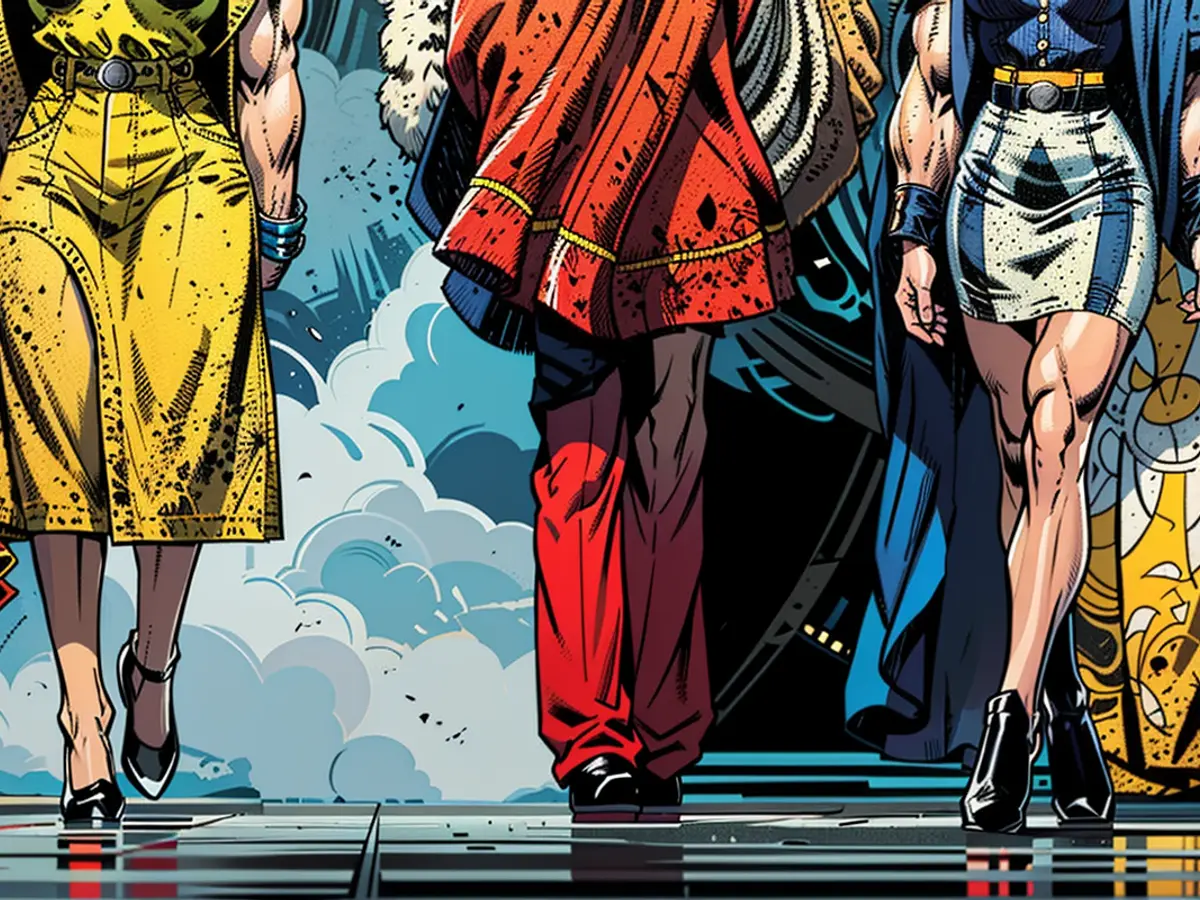Various hues spark living desires within you.
As the autumn leaves paint the landscape with their most stunning hues, many individuals opt for muted attire. However, a shift in fashion trends is becoming evident, and this change is attributed to the fact that colors carry meanings and symbolize sentiments.
In the realm of fashion, interior design, or everyday items, people are increasingly drawn towards vibrant tones, as reported by trend analysts. "Individuals are embracing stronger hues again to create contrasts and make bold statements," shares trend expert Gabriela Kaiser from Landsberg. This trend, according to Kaiser, is a reflection of a desire for positivity that has waned amidst various crises.
Following a period where social media platforms like Instagram popularized monochromatic styles, a yearning for variety and expression through color has resurfaced, as per Kaiser. "Red, for instance, in the form of a red chair or an armchair, is making a more frequent appearance at exhibitions," says Kaiser. Red symbolizes energy, dynamism, and power, and conveys: "Pay attention to me."
Colors convey meanings
Color psychologist Axel Buether emphasizes the importance of using colors thoughtfully – whether subtly, such as with a colorful bag or a multicolored notebook, or overtly, as through wall paint. "It simply makes you appear more approachable," he explains. Colors can not only boost one's mood but also signify a readiness to stand out and display one's personality.
Buether encourages 'the courage of color.' According to him, colors represent joy, variety, and diversity. "They also function as an expression of personality. They can indicate that you're open, creative, and spontaneous," says Buether, who is also a professor of visual communication at the Bergische University of Wuppertal. Around 60 to 70 percent of our brain activity is dedicated to color perception, according to the psychologist. "Colors occupy a significant portion of our lives."
However, Buether asserts that there can never be a single, unanimous trend – except in dictatorial regimes. And thus, there are also individuals who prefer monochromatic styles: "During times of crisis, fear can lead people to seek as little external influence as possible," he explains. They believe that reducing colors makes the world less complex and more manageable. Some individuals also opt for subtle tones due to fear of making mistakes, particularly in the workplace, according to Buether.
Vibrant vehicles?
Colors in clothing or accessories can typically be easily switched based on personal preference. However, with cars, the situation is different. According to a statistic from the Federal Motor Transport Authority, Germans frequently choose a colorless paint for their cars.
As of July, around 33 percent, or approximately 566,000 of the newly registered vehicles this year, were gray. Black cars follow with around 26 percent, and white cars with 20 percent. It's not until 8.7 percent that the first more vibrant color appears: blue. Just under 5 percent of new registrations were red, and less than 3 percent were green.
"Cars have largely lost their color globally since the 2000s," shares Buether. "It was different in the past, as shown by classic cars." Today, cars are often perceived as merely technical devices from which people have distanced themselves.
However, color appreciation can still be observed in other areas, such as bicycles. With them, individualism and the joy of movement are expressed. "Generally, more colors represent passion, while monochromatic colors symbolize neutrality," says Buether.
Germans' favorite color is blue – "surveys consistently show this," shares Buether – and he adds that this trend is not a recent phenomenon, influenced solely by right-wing parties adopting the color. Blue represents openness and is highly positively connoted. "This does not mean, however, that Germans purchase everything in blue or paint their walls blue."
In line with the trend shift, fashion enthusiasts are incorporating vibrant colors back into their wardrobes, mirroring a desire for joy and self-expression. This resurgence of bold hues in fashion, as reported by trend expert Gabriela Kaiser, is a testament to people's yearning for positivity after enduring various crises.
Color psychologist Axel Buether underscores the impact of colors on our perception, stressing that they can significantly influence our mood and how others perceive us. By using colors consciously, whether subtly or overtly, we can convey a sense of approachability, openness, and creative spirit, according to Buether.






